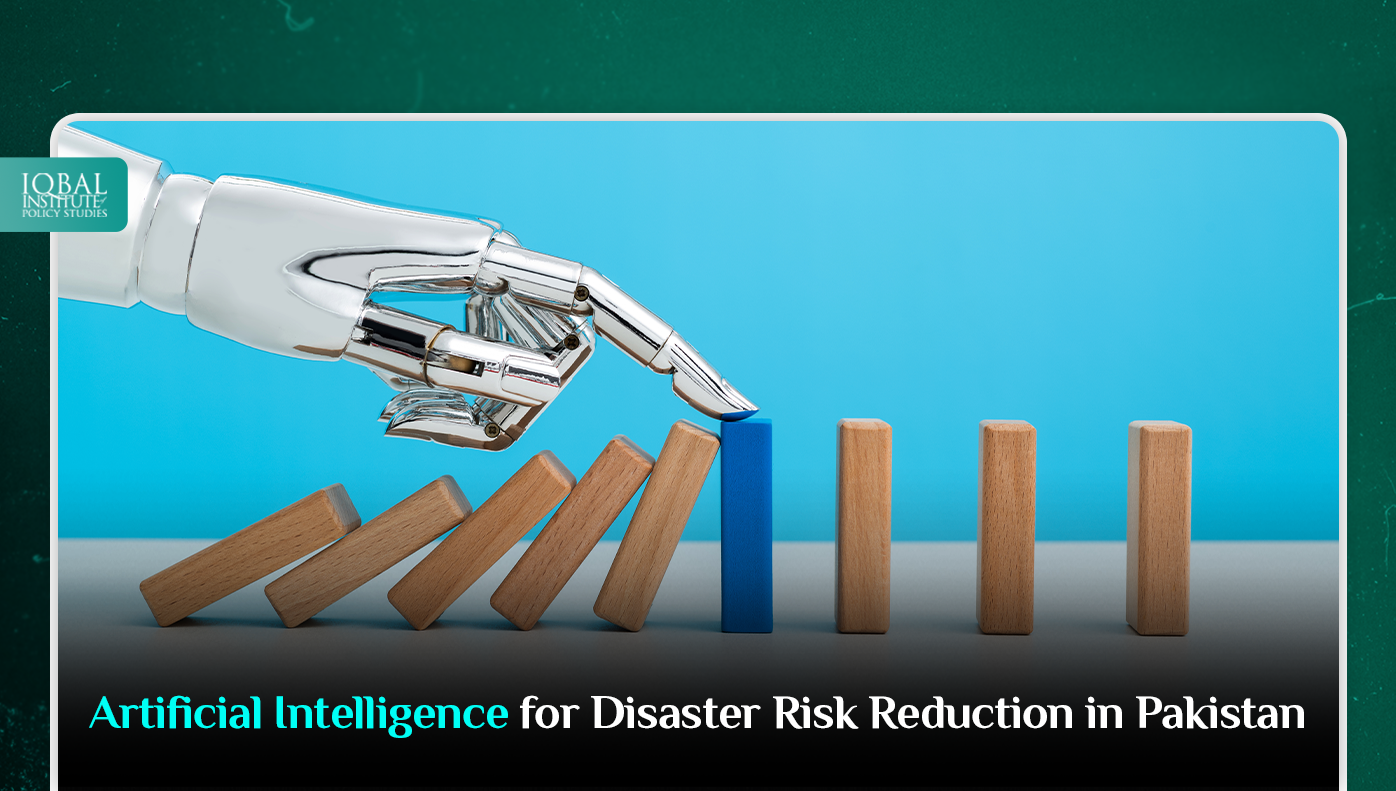Natural hazards have the potential to cause catastrophic damage and significant socioeconomic loss. The wear and loss followed in recent decades have shown an inclining trend. As a result, disaster management needs to take responsibility to proactively protect their communities by devising efficient management strategies. Artificial Intelligence (AI) can improve disaster risk reduction and control by providing timely and precise information to decision-makers, first responders, and affected communities (Sun et al., 2020).
However, AI can play a significant role in Disaster Risk Reduction (DRR), from forecasting extreme events to developing hazard maps and detecting events in real-time (Kuglitsch et al., 2022). This raises several questions, such as: what opportunities does AI present? What are the challenges? Moreover, how can we utilise AI to provide policy-makers, stakeholders, and the public with disaster information? So, this blog will discuss AI’s useful DRR strategies and their challenges regarding usage and recommendations for implementing AI.
Artificial intelligence in Disaster Risk Reduction (DRR)
Countries like Pakistan are one of the most vulnerable countries to natural disasters. These disasters become challenging for government officials and first responders facing the aftermath of a disaster on a large scale and need time-sensitive rescue and recovery efforts. Therefore, artificial intelligence can assist in identifying the affected areas, tracking damage assessment and providing critical data to victims. This information can significantly benefit Pakistan’s management capabilities by accurately predicting, preventing and mitigating the impacts of natural hazards. Artificial intelligence can also be used efficiently in Pakistan for the following purposes:
Early Warning System
AI-powered early warning systems are being used worldwide to help protect lives and property. Artificial intelligence can predict the probability of a convective event occurring at a given location on a particular day under certain meteorological and climatological conditions. Furthermore, data from AI-based sensor networks can be used to detect flash flood, which often occurs little with no forewarning (Mendoza-Cano et al., 2021).
Flood Mapping
AI can be used to create detailed maps of flood-prone areas in Pakistan by analysing satellite data and other sources of information. Moreover, AI algorithms can create accurate models of flood-prone areas. This can help emergency responders focus on the most at-risk areas.
Damage Assessment
However, AI can be used to assess the extent of damage caused by disasters such as earthquakes and floods. An AI algorithm can estimate the scale of destruction and prioritise rescue efforts using satellite imagery and drone footage.
Resource Allocation
In the aftermath of a disaster, AI can allocate resources like food, water, and medicine to the most needy areas. This technology can consider factors like population density, transport routes, and available infrastructure to ensure that aid reaches those most in need.
Social Media Analysis
AI can analyse social media posts to detect early warning signs of disasters. For example, a sudden increase in posts about flooding in a particular area could indicate the start of a disaster. By analysing social media data, authorities can respond more quickly to disasters and save lives and property.
Challenges to the Use of AI for DRR
Artificial intelligence can be used for disaster management in Pakistan, but there are some potential challenges which are given below:
Lack of Technical Infrastructure
These advanced artificial intelligence systems require advanced technical infrastructure, including high-speed internet and super fast-computing system. So, many areas of Pakistan may not have access to these resources, making it difficult to deploy AI-powered disaster risk reduction tools.
Limited Data Availability
For AI to perform accurately and reliably, it needs access to high-quality data. In Pakistan, there are limited data available with less accuracy on past disasters, which could make it difficult for artificial intelligence tools to predict future events.
Ethical Considerations
As with any technology, AI systems for disaster management require ethical considerations. In the event of a disaster, there is a risk that biases may be introduced into the algorithms, resulting in unjustified treatment.
Lack of Funds
Developing and deploying AI-powered disaster management tools can be expensive, which may limit the number of organisations and agencies that can utilise them in Pakistan. This could prevent smaller organisations or those with limited budgets from accessing these resources.
Recommendations
Develop a Comprehensive Disaster Management System
The first step in implementing AI for disaster management in Pakistan is to develop a comprehensive disaster management system that integrates AI technologies. This system should be designed to identify, assess, and respond to natural disasters quickly.
Real-Time Monitoring
AI should be used to monitor real-time data from sensors, drones, and other sources to detect potential disasters and respond to them proactively. It can be done by AI-powered early warning systems designed to provide timely alerts to communities in case of potential disasters.
Predictive Analytics
AI algorithms can analyse historical data and current weather patterns to accurately predict the likelihood of disasters, such as floods or earthquakes, and allow authorities to take preventive measures.
Smart Evacuation Planning and Resource Allocation
By analysing real-time traffic data, AI can help authorities plan and execute efficient evacuation plans in case of a disaster. During and after a disaster, AI can coordinate and optimise the distribution of resources such as food, water, and medical aid. AI-powered drones and satellites can quickly assess damage to infrastructure and buildings, allowing authorities to prioritise rescue and recovery efforts.
Public Awareness Campaigns
It should be necessary to consider artificial technologies that can be used to design effective public awareness campaigns to educate people on disaster management and preparedness.
Collaborative Networks
AI can facilitate communication and collaboration between different stakeholders involved in disaster management, including government agencies, NGOs, and volunteers.
Capacity Building
Lastly, AI can be used to build the capacity of local communities and authorities to manage natural disasters effectively. This can include training programs and access to relevant data and tools.
Conclusion
However, AI can be significant for disaster management in Pakistan, as it helps to predict and prevent natural calamities such as landslides, floods, and earthquakes. Aside from identifying the affected areas, AI can track damage assessments and provide real-time assistance to victims. However, there are still some challenges in utilising the full potential of AI, like lack of funds and awareness, technical infrastructure and high-quality availability of data of the major hindrances. Therefore, a disaster management system is necessary for smart evacuations and resource allocation in hard-hit areas.
This article is written by Waqar Ahmad. Waqar is a Research Analyst at the Iqbal Institute of Policy Studies (IIPS).
References
Sun, W., Bocchini, P., & Davison, B. D. (2020). Applications of artificial intelligence for disaster management. Natural Hazards, 103(3), 2631-2689.
Kuglitsch, M., Albayrak, A., Aquino, R., Craddock, A., Edward-Gill, J., Kanwar, R., … & Luterbacher, J. (2022). Artificial intelligence for disaster risk reduction: opportunities, challenges, and prospects. Bulletin nº, 71(1).
Mendoza-Cano, O., Aquino-Santos, R., López-de la Cruz, J., Edwards, R. M., Khouakhi, A., Pattison, I., … & Perez, I. (2021). Experiments of an IoT-based wireless sensor network for flood monitoring in Colima, Mexico. Journal of Hydroinformatics, 23(3), 385-401.



Leave a Reply